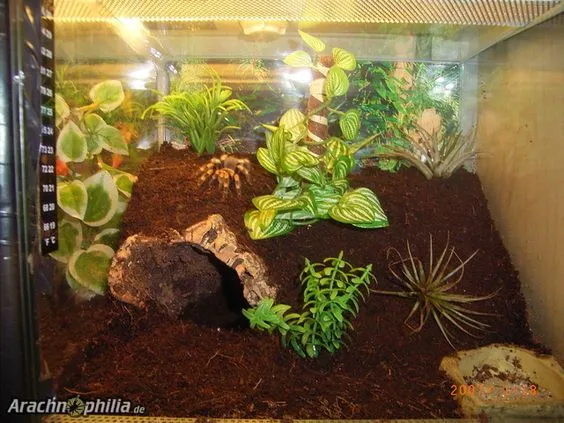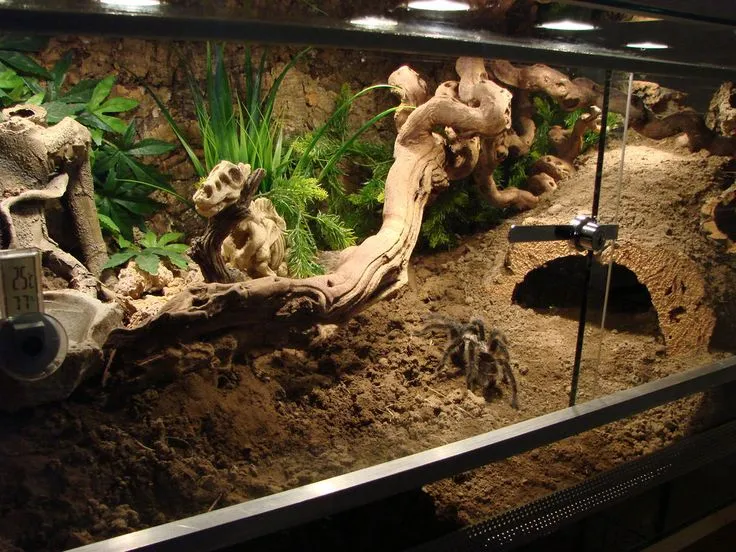The World of Tarantulas
Tarantulas, those large, captivating spiders, have fascinated humans for centuries. Their size, hairy bodies, and sometimes intimidating appearance often spark curiosity and, at times, fear. However, beyond their physical attributes lies a fascinating world of diverse habitats and survival strategies. Understanding where these creatures live, what they eat, and how they adapt is crucial for appreciating their role in the ecosystem and for conservation efforts. The natural habitat of a tarantula plays a vital role in its life cycle, influencing its behavior, physical characteristics, and overall survival. This exploration will delve into the top 5 primary habitats, revealing the unique challenges and adaptations that these spiders have evolved to thrive in.
Where Do Tarantulas Live
Tarantulas are found on nearly every continent, with the exception of Antarctica. Their adaptability is remarkable, allowing them to occupy a variety of environments, from lush tropical rainforests to arid deserts. The specific location a tarantula calls home depends on the species and its unique requirements for survival. These requirements typically include a suitable climate, adequate food sources, and appropriate shelter. Most tarantulas are terrestrial, meaning they live on the ground, while some are arboreal, dwelling in trees. Understanding the geographical distribution is crucial for understanding the diverse range of habitats that support these spiders.
Tropical Rainforests

Tropical rainforests are a haven for biodiversity, and tarantulas are no exception. The warm, humid climate and abundant insect population provide ideal conditions for these spiders to thrive. The dense vegetation offers ample opportunities for camouflage, and the rich soil provides areas for burrowing. Several tarantula species, especially those in South America and Southeast Asia, have made these rainforests their home. The constant warmth and high humidity create a stable environment where tarantulas can successfully hunt and reproduce. These environments provide a continuous food supply which is essential for their growth and development.
Why Tropical Rainforests are Ideal
The tropical rainforest provides an almost perfect habitat for tarantulas. The consistent temperature, ranging from 70 to 90 degrees Fahrenheit, allows for year-round activity. The high humidity, often above 80%, prevents desiccation, which is crucial for these spiders as they are prone to water loss. The abundance of prey, including insects, smaller spiders, and even small vertebrates, ensures a constant food supply. Furthermore, the dense foliage and thick leaf litter provide ample cover, protecting the tarantulas from predators and providing them with suitable places to build their burrows or webs. The complex ecosystem of the rainforest provides the ideal conditions for these spiders to flourish, making them some of the most successful arachnids in these regions.
Deserts
Contrary to what one might expect, some tarantula species have adapted to life in arid desert environments. These spiders, found in regions of the southwestern United States and parts of Africa, have developed unique strategies for survival in harsh conditions. The deserts present significant challenges, including extreme temperature fluctuations, scarce water resources, and limited food availability. Despite these hurdles, desert-dwelling tarantulas have found ways to thrive, showcasing their resilience and adaptability.
Adaptations for Desert Survival

Desert tarantulas have evolved remarkable adaptations to cope with their environment. Many species are nocturnal, emerging from their burrows only at night to avoid the scorching daytime heat. They construct deep burrows, sometimes several feet underground, to regulate their body temperature and retain moisture. Their bodies are often covered in specialized hairs that help to trap moisture from the air. They are efficient hunters, ambushing prey that ventures too close to their burrows. Desert tarantulas are also capable of surviving for extended periods without water, extracting moisture from their prey and conserving water through their efficient physiology. They are a testament to nature’s ability to adapt to extreme conditions.
Grasslands
Grasslands, with their open spaces and tall grasses, offer another habitat for tarantulas. These areas, often found in regions with moderate climates, provide a mix of sunlight and shade, along with an abundance of insect life. The soil in grasslands is often suitable for burrowing, and the surrounding vegetation offers cover and hunting opportunities. These environments support diverse tarantula populations, which play a role in controlling insect populations. From the expansive savannas of Africa to the prairies of North America, these ecosystems offer a unique environment for tarantulas to flourish.
The Grassland Ecosystem
The grassland environment is a dynamic ecosystem where tarantulas are a key predator. The tall grasses provide cover for both the tarantulas and their prey, such as crickets, grasshoppers, and other insects. The soil structure, often a mix of loam and clay, is ideal for digging burrows, which provide shelter from predators and extreme temperatures. The seasonal variations in rainfall and temperature influence the activity of the tarantulas and their prey. These spiders play a crucial role in the food web, helping to control the insect population and, in turn, becoming a food source for larger predators. The grassland environment is a complex and vibrant environment, a testament to nature’s ability to create a diverse and balanced ecosystem.
Burrows and Shelters

Regardless of the specific habitat, tarantulas typically rely on some form of shelter to survive. This can include burrows dug into the ground, natural crevices in rocks, or even the undersides of logs and other debris. These shelters provide protection from the elements, predators, and excessive heat or cold. The construction and maintenance of these shelters are crucial for the tarantulas’ survival, as they serve as a refuge and a base for hunting. The type of shelter varies depending on the species and its environment, ranging from simple holes in the ground to elaborate silk-lined burrows.
Tarantulas in Subtropical Regions
Subtropical regions, characterized by their warm temperatures and moderate humidity, provide an ideal environment for various tarantula species. Found in areas like Florida, parts of Australia, and Southern Africa, these regions offer a balance of environmental factors that supports a thriving population of tarantulas. The consistent climate allows for year-round activity, and the abundance of insect prey provides a steady food supply. The lush vegetation, characteristic of many subtropical environments, offers ample cover and opportunities for ambush hunting. These regions are crucial habitats for many tarantula species.
The Subtropical Environment
The subtropical environment offers a unique set of conditions for tarantulas. The warm, humid climate supports a wide variety of insects and other invertebrates, providing ample food sources. The diverse vegetation, ranging from forests to grasslands, offers a variety of microhabitats. These spiders often construct burrows in the soil or utilize natural crevices. The consistent temperatures allow for year-round activity, facilitating growth and reproduction. These environments support a diverse range of tarantula species, each adapted to specific microclimates and prey. The subtropical regions are a critical part of the global tarantula distribution, demonstrating the adaptability and resilience of these arachnids.
Protecting Tarantula Habitats

Protecting tarantula habitats is crucial for the conservation of these fascinating creatures. Habitat loss, due to deforestation, urbanization, and agricultural expansion, is a major threat to tarantula populations. Climate change, with its potential to alter temperatures and rainfall patterns, also poses a significant challenge. Conservation efforts include protecting existing habitats, promoting sustainable land management practices, and raising awareness about the importance of tarantulas in the ecosystem. By understanding the natural habitats of tarantulas and the threats they face, we can take steps to protect these amazing spiders and ensure their survival for future generations. Education and responsible practices are crucial in maintaining the delicate balance of nature.
